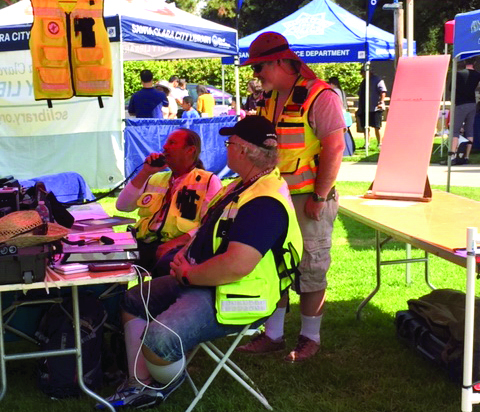Santa Clara’s amateur radio group doesn’t get a lot of recognition, but if another major earthquake ever hits the Bay Area, the small group could be the difference between life and death.
“I consider them to be an extremely valuable asset,” said Lisa Schoenthal, the City of Santa Clara’s Emergency Services Coordinator. “During times of catastrophic emergency, [HAM radios] have been the only mode of communication.”
In April of 2015, an earthquake in Nepal killed nearly 9,000 people and injured nearly 22,000 more. A year later at a talk in Santa Clara, Dr. Sanjeeb Panday from Nepal talked to local amateur radio operators about the vital role HAMs played in mobilizing emergency services.
The quake knocked out power and internet in much of Nepal. Since amateur radios run on batteries and do not rely on internet connectivity, they were still able to communicate after the earthquake.
Amateur radio also made a difference in Puerto Rico during 2017’s Hurricane Maria. The hurricane knocked out cell towers. Amateur radios do not rely on cell towers, so they were a natural choice for communication following the disaster.
These two emergencies made Santa Clara more aware of how vital HAM radio operators are to the City’s safety.
“I’m a very strong proponent of having multiple redundancies,” said Schoenthal. “When it comes to communication, it’s vital that you have a Plan A, Plan B, Plan C, Plan D.”
The problem now facing Santa Clara is a lack of radio operators. Many of the volunteers on the team have moved out of the City.
“It’s all volunteers,” said Schoenthal. “We really value them. They’re really important.”
Schoenthal says to become a HAM radio operator you must attend a one-day class, a “HAM cram,” and then take a test afterward. Once you pass, you can apply for a radio operator’s license. You can buy a radio on Amazon or at a local HAM radio shop.
Radio operators commit to a weekly roll call to test out their radios and occasional drills to make sure the City is prepared for a catastrophic emergency. If a true emergency happens, they’ll report to the City’s emergency operations center for further instructions.
“[In an emergency situation], wherever we would be having challenges with communication, a radio operator would be deployed there,” said Schoenthal.
If you would like to join Santa Clara’s amateur radio group, contact Schoenthal at (408) 615-4990.





View Comments (1)
Actually, you do not have to take a class, you only need to take and pass the test.